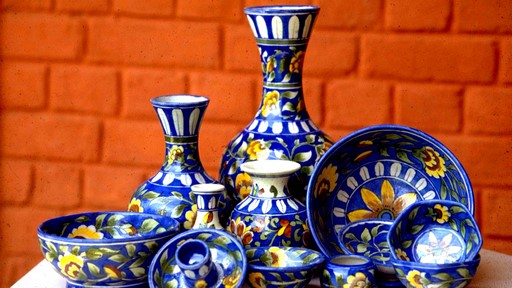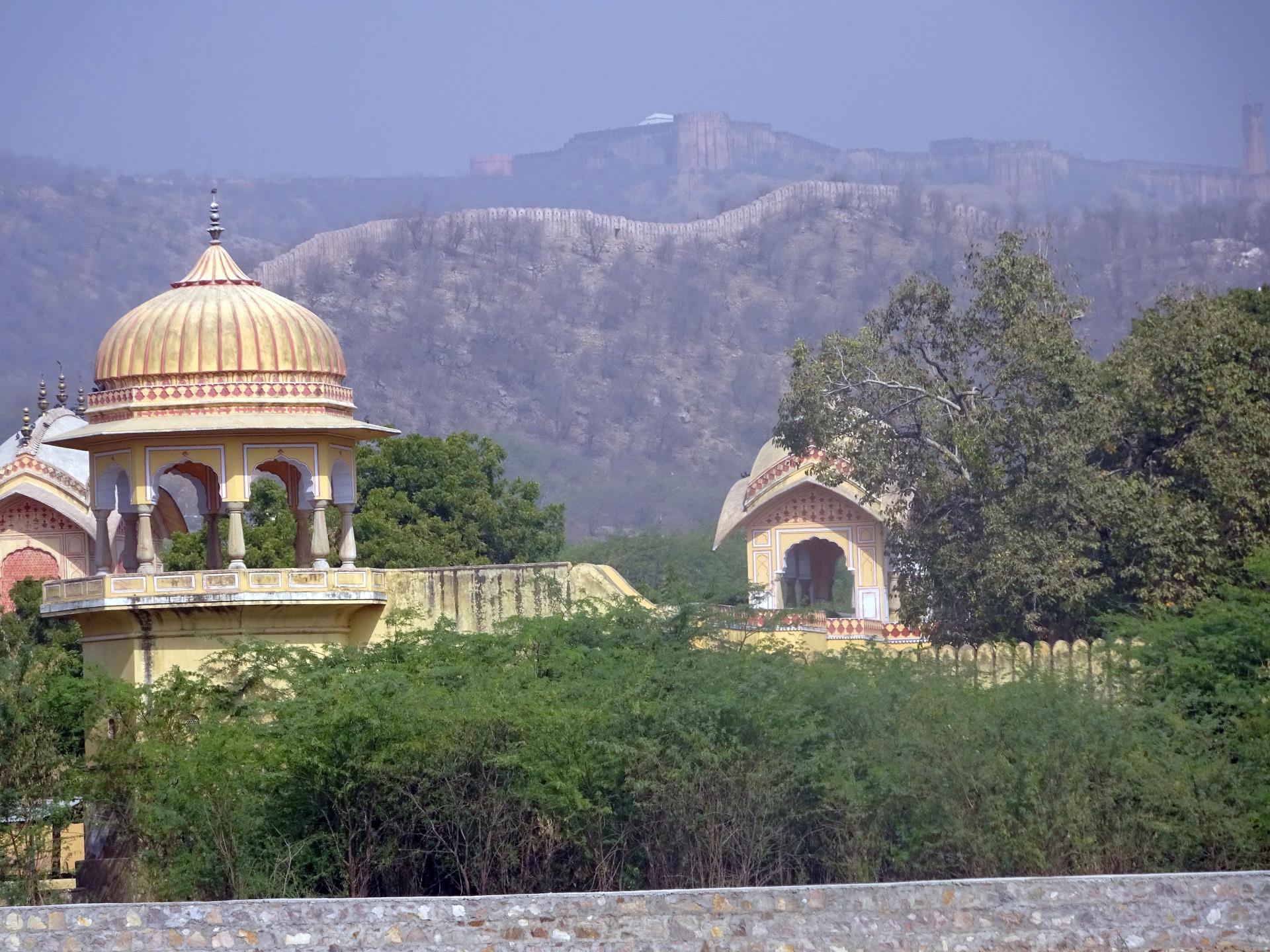
Sorry, we couldn't find anything that matches your search.
Destination

Famous Places to Explore in Hyderabad
A vibrant city with the imposing...

Raipur Tourist Places | Best Place to Visit
The stronghold of several erstwhile...

Ahmedabad
Declared as India's first UNESCO World...
#
Rajasthani handicrafts and handloom are famous all over the world. Embossed and printed with some of the iconic art forms, these handicrafts are stylish as well as enchanting. Apart from this, the city is also famous for other goods like handmade paper, jewellery and leather craft. Here are some of the articles one can shop for in Jaipur along with markets that are popular haunts.
Blue Pottery
An art form that was introduced the Mughals, blue pottery came to Jaipur from Persia and Afghanistan. In this style, objects are made from quartz and not clay. Materials that are used include raw glaze, sodium sulphate, and multani mitti (fuller's earth). The beautiful hues of blue and turquoise are obtained through the use of copper oxide and cobalt oxide which gives it a distinctive look. There are a number of products you can purchase including plates, flower vases, soap dishes, door knobs and glazed tiles with hand painted floral designs. There are several shops in Jaipur from where you can buy these items.

Leather Craft
The skilled craftsmen of Rajasthan make a number of exquisite leather articles including jutis and mojaris (types of traditional shoes), chairs, musical instruments, clothes, footwear, caps, saddles, armour, bags etc.
Jewellery
Jaipur is a hotspot for kundan jewellery and has a history of jewellery with precious gems that can be traced back to more than two and a half centuries. Apart from kundan, Jaipur is known for the manufacture of specialised jewellery such as Minakari and processing of coloured gems. Moreover, it is a global centre of cut and polished emeralds. One can also shop for coloured gems, silver and pearls here. However, kundan remains the highlight of this royal city. Historical sources say that the art of making kundan jewellery came to Rajasthan from Delhi. Today kundan jewellery has become a choice accessory of brides. The process of making kundan jewellery is a fascinating one. It starts with a skeletal framework called ghaat. Then, wax is poured onto the framework and moulded according to design. This process is called paadh. The next step is khudai where the uncut multi-coloured gemstone is laid on the framework that can be made of pure gold or other metals. This is followed by minakari, where refining is done to define the details of the design. Then, gold foils are added that hold the gems to the framework and this step is called pakai. Finally, the gems are polished in the chillai process.

Leheriya and Bandhej
Rajasthani handicrafts and handloom are famous all over the world. In Jaipur, especially, there are several places to shop for traditional tie-and-dye fabrics like leheriya and bandhej. Created by tying fabrics and then dying them is a resist-dye method, the leheriya and bandhni or bandhej textiles are iconic among Rajasthan's traditional crafts. While bandhej designs are mostly floral or geometric, leheriya fabrics have diagonal lines that look like waves. The colours that are mostly used in this technique are red, yellow, blue, black and green. After dying, bandhani appears in various patterns like waves, dots, strips and squares. This depends on the manner in which the cloth has been tied. The government store on MI Road, Bapu Bazaar, Johari Bazaar, and Nehru Bazaar are some places where clothing and handicraft items can be purchased. There are also stalls in Choti and Bari Chaupur. All these markets usually remain closed on Sundays.
Bagru
Located on the Ajmer Road, this small village, located35 km from Jaipur, is known for the traditional Bagru prints.
Bagru is a classic wooden block printing style, in which the blocks are engraved with the design which is replicated on the fabric. This craft is praised not only for its technique but also its ecological consciousness by using traditional dyes. The print patterns of Bagru are known as 'ajrakh' and the origin of this art can be traced back to 300 years. There is a specific area in the village that is a hub of Bagru printers and a walk through this area will give visitors a view of almost three dozen families who are engaged in this art form. The process is entrancing as the craftsman first wipes the cloth with fuller's earth (multani mitti) and then dips the cloth in turmeric water to give it the customary cream colour. After this, various patterns are embossed on the fabric using natural dyes. The dyes of blue get their colour from indigo, the red ones from madder root and green is obtained from indigo mixed with pomegranate juice. The yellow hues are taken from turmeric.

Sanganer
Sanganer, situated 16 km from Jaipur is famous for textile printing and handmade papers. Sanganeri hand block printing has received a Geographic Indication (GI), Tag. The concept of the handmade paper industry was prospered by Maharaja Sawai Jai Singh II in 1728, and today it manufactures supreme quality handmade paper. Sanganer is also a famous Jain pilgrimage because of the ancient Jain temple of Lord Adinath (Rishabh Dev) located here. You can visit the small town to see how the printing is done and also shop for products here.









